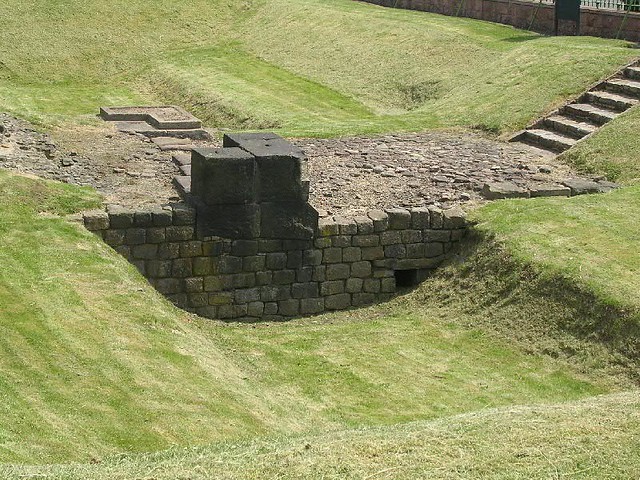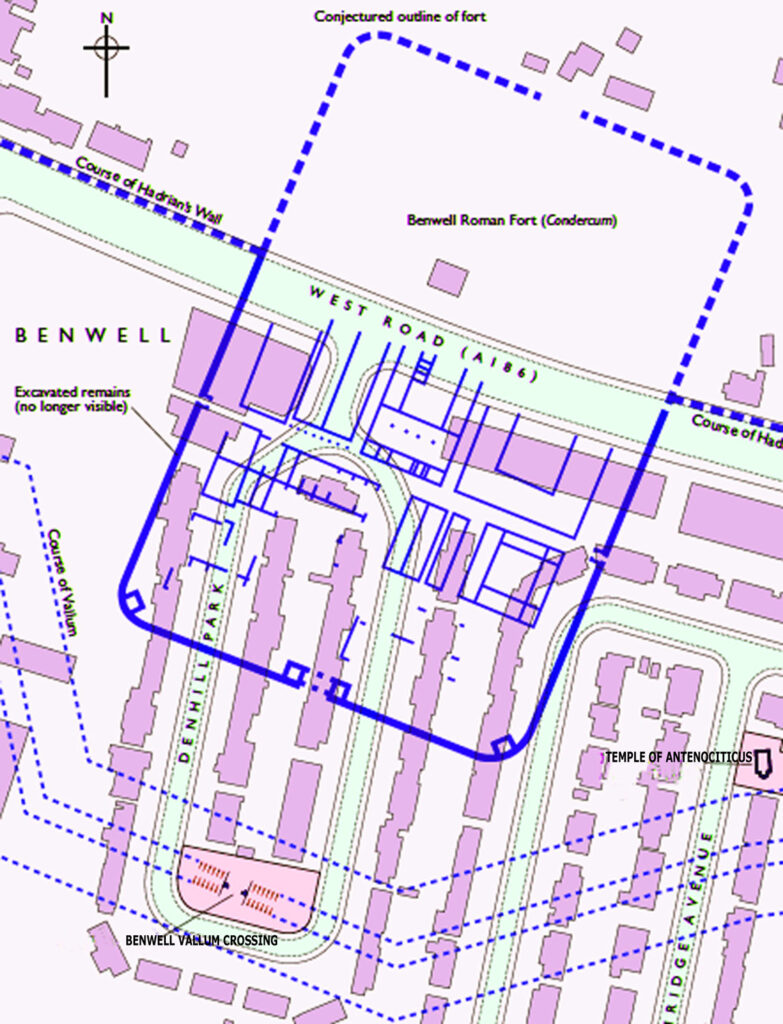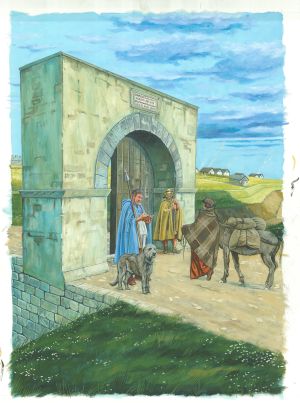In this blog, I’m in a place called Benwell in the West End of Newcastle. In Roman times, this area was known as Conicum. Here there is a Vallum which is a military ditch behind Hadrian’s Wall. It lies to the south of the Wall and some historians suggested this was originally designed as the foundation for a road that would go east-west across the Roman frontier in northern Britain.

However, I believe a much more likely argument is that this was always designed to break up the land to provide a frontier or barrier between the military zone, to the north of Hadrian’s Wall, and the civilian zone to the south. This area was the Roman fort of Conicum. It was quite an amazing and interesting fort because of the fact it was the third fort on Hadrian’s Wall and it was initially stationed with Germanic troops from the lower Rhine. These were the first cohort of Vangiones which was a mixed cavalry and infantry unit. Later on, the fort was home to a unit of Asturians – Spanish cavalry.

In both cases, there were cavalry elements to push north and control the area. They would have been instructed to keep the native Britons away and push north against any incursions. So this was quite an important area. The Vallum crossing, which would have been just 50 meters to the south, directly lined up with the south gate of the Roman fort, was quite an important part of the frontier defences. As you came up to the Roman fort you would have come across a huge ditch which would cut off the land from the civilian zone and from the Vicus – the civilian settlement nearby. It would then lead to the entrance to a military-controlled area.
Here in Benwell is an interpretation panel which gives an idea of what this Vallum crossing would have looked like in the past. There would have been a large stone monument that broke up the land between the metalled road leading up to the fort, and the road leading to the south, probably down into the river Tyne or down into the Tyne Valley itself. It would have been extremely intimidating to the native Britons who, while they built in stone didn’t build like this. They were capable of building in stone because we know they built hill forts, roundhouses and walled complexes but never to the extent the Romans built in stone.

When the Romans built in stone they built to the nth degree. They built huge forts and massive structures like Hadrian’s Wall. They also built grand temples, houses and palaces. So, as a native Briton, seeing this gateway with a huge arch, which you had to pass through to enter the Roman fort, would be intimidating.
Just like today, approaching a military structure without a good reason was a bad idea. Visitors would have been searched and questioned to find out why they were going up towards the fort and towards Hadrian’s Wall. It’s likely that the only people coming up this road would have been people who were supplying the fort, or soldiers coming back from being on duty. Local government officials for the Roman Empire may also have visited occasionally. It’s very unlikely that natives who didn’t have a reason to be here would have gone anywhere near the fort and this crossing, but they would have seen it during their day-to-day lives. The message the Vallum gave would have been that they no longer belonged to them, but to the Romans. It served to break up the land between the military-controlled zone to the north, the civilian-controlled zone to the south, and the barbarian zone to the north.
The Roman Empire declared that people north of the wall were barbarians and foreigners and the military was there to keep the barbarians out. Free men or the free peoples, lived in the Tyne Valley and were ruled by the Romans, but they weren’t citizens because they didn’t have the same rights yet and they would have to either buy their citizenship, earn their citizenship, or join the army to get citizenship.
For native Britons, they were told they had to give up everything they had before and become part of the new Roman system or lose access to certain parts of society. This really broke up the way the native Britons lived.
So not only was the Vallum a political statement, but it also brought with it some wonderful features. Beneath the crossing is a channel. That was built in to stop the buildup of water, which meant the water could move underneath the crossing without causing it to subside or collapse and it’s one of the reasons why it still remains here to this modern day.

This is a brilliant example of Roman construction which can still be seen today and educates us about the Roman Empire in Britain. So the Vallum Crossing not only shows us that there was a new social system in Britain which separated the natives from the Romans, but it also divided Britain into two areas – the North and the South. The land to the north was excluded from the Empire, while the land to the saw a whole new understanding of the way we look at the British Isles.
You can watch my YouTube video about this here


